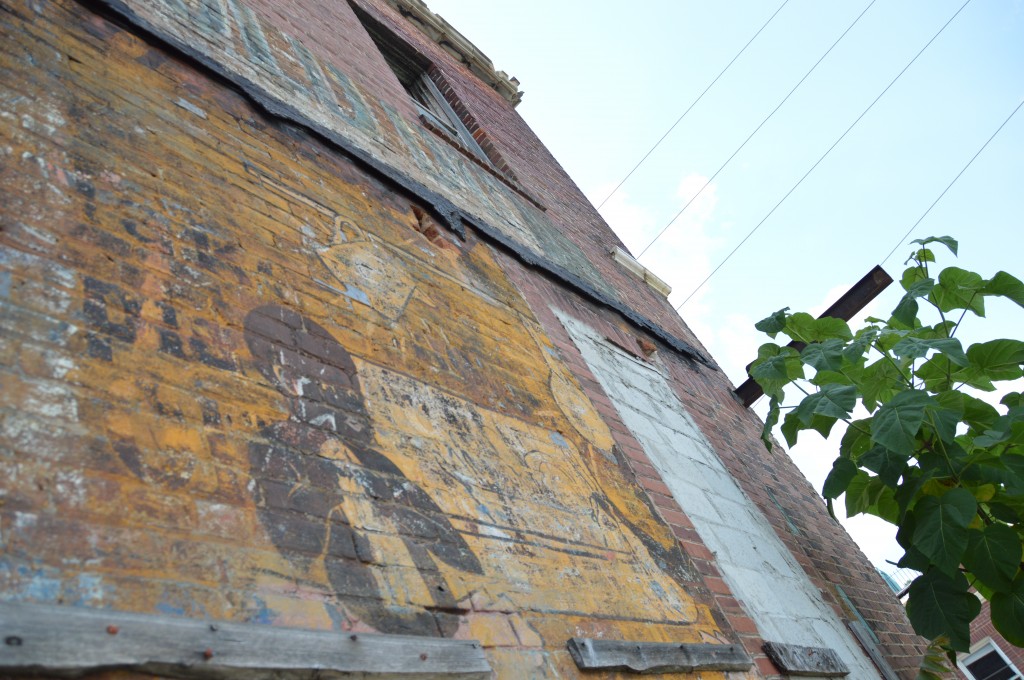If you take a stroll through the historic “Sweet Auburn” district of Atlanta, there’s no doubt you’ll run into landmarks of the Civil Rights Movement. You may pass the birthplace of Martin Luther King Jr. or see the steeple of the Ebenezer Baptist Church. You might even stop at the African American Panoramic Experience (APEX) museum to learn about the Civil Rights movement. While surrounded by so many monumental buildings, a dilapidated one with the inscripted letters “Atlanta Life Insurance Co.” on the front might escape your notice—as might a faded advertisement on the side of the building. A recently discovered mural depicts the Gold Dust twins, two black marketing characters used to sell dish soap in the early 1900s. The caricature shows the two gender-ambiguous children in blackface, reminiscent of the racist tendencies of early advertising.
“It’s a painting that gives us a glimpse into a time period,” said Paul Hammock, Director of Education at the Atlanta Preservation Center. “It gives us reflection on the past, and the realities of the past, but also on how far [we’ve] come.”
Hammock said that the Preservation Center wants the old Atlanta Life Insurance Building, which is currently in a state of decay, to be refurbished in order to preserve the Gold Dust Twins.
“As historians, we always want to see something saved [for interpretation],” Hammock said.
Junior Cheyenne Love, whose AP Language and Composition class wrote a short essay on the controversy of the Gold Dust twins mural, shares the hopes of the Atlanta Preservation Center.
“It’s one thing to hear about segregation and the hardships African Americans had to go through in a book,” Love said. “It’s another thing to be able to walk down a street in the middle of Atlanta and see an image like that. In it’s original state, you can view it like people would have [in the early 1900s].”
With the Life Insurance Building in decay and potentially set for demolishment, many Atlanta residents were concerned about the fate of the Gold Dust twins. The Atlanta City Council passed a resolution on May 4 which created a group of historians, community leaders, and the owners of the building who decided the means by which the mural is to be preserved.
“The council believes that [the mural] should be preserved for what it is: a snapshot of life about 80 to 100 years ago,” Councilman Michael Julian Bond said.
Bond’s resolution achieved a consensus vote from the City Council. Bond said that the Gold Dust Twins mural should be saved, despite, or possibly because of, its racist message.
“They were offensive in their time and they are equally offensive now,” Bond said. “[But] you have see things as they were in the context of their time.”
Bond says that the perception of black people in the 1900s parallels today’s perception, especially considering recent events in Baltimore.
“It would seem the African American male is a thing of fear or suspicion, of loathing,” Bond said. “But yet, some of the same folks who might harbor those attitudes will watch the NBA playoffs and cheer for their favorite African American player, or listen to their favorite African American rap artist or entertainer. It’s like, what is the real nature of African Americans in our society? What role do we really play?”








